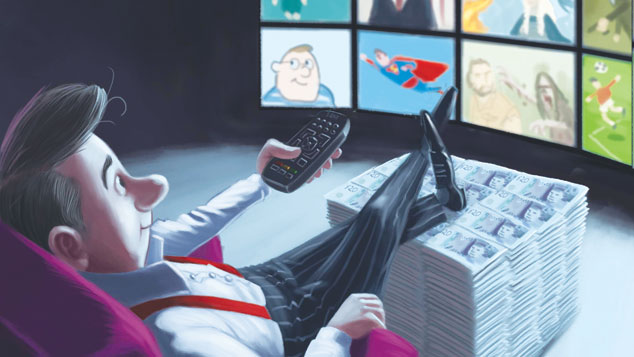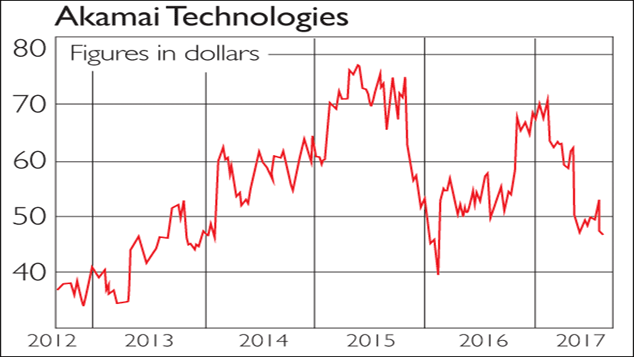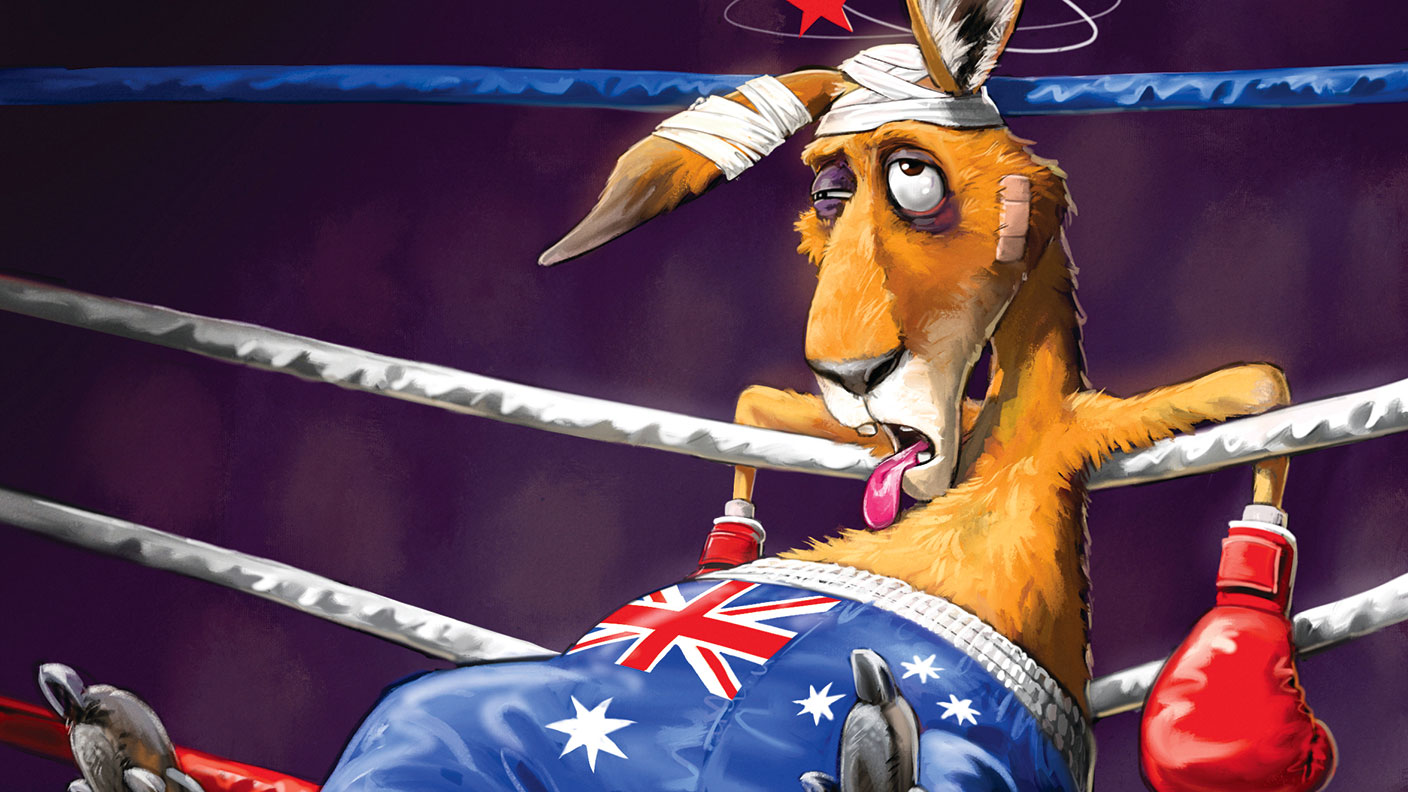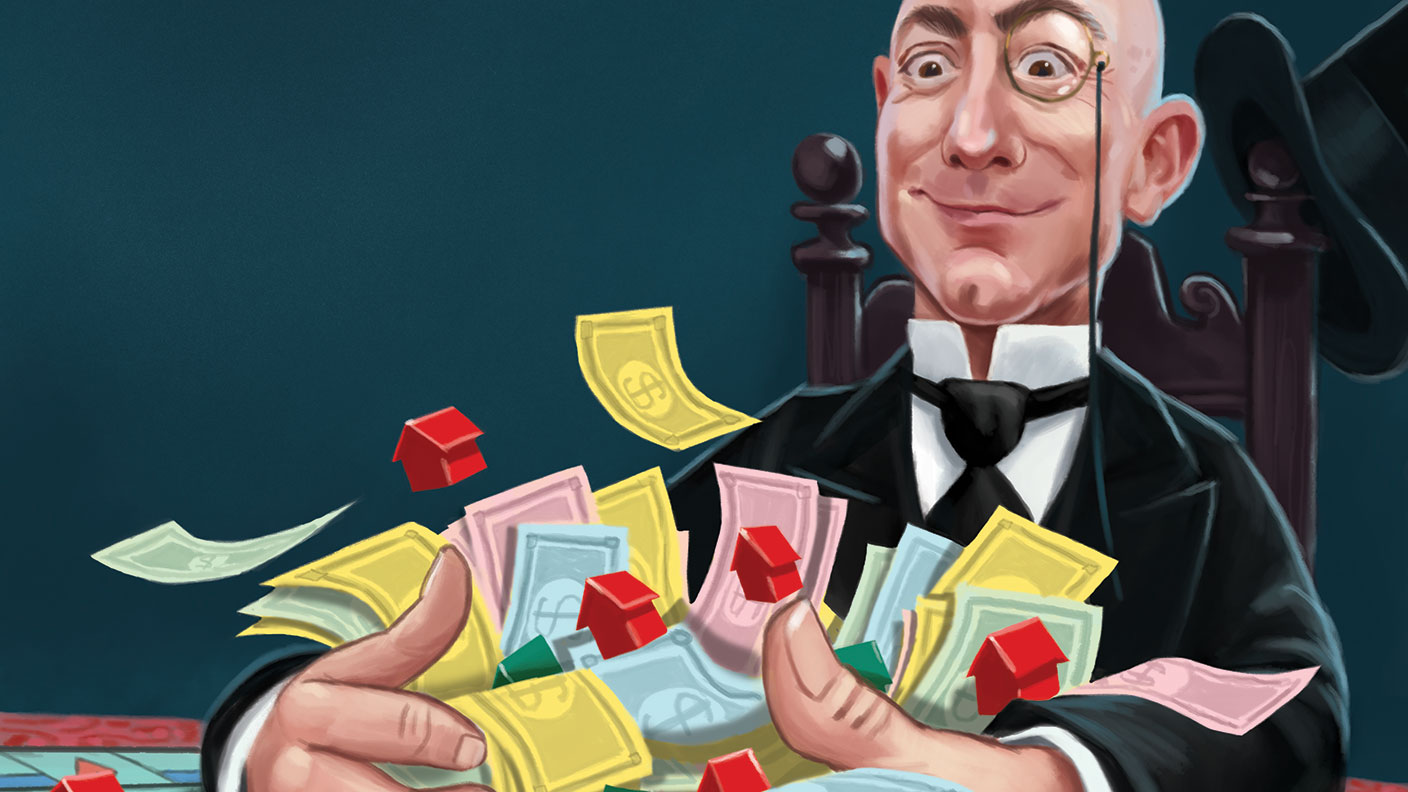Profit from the golden age of television
How we watch TV is going through dramatic changes, with a rise in streaming services leading to a surge in demand for content. Matthew Partridge looks at how to invest.


How we watch TV is going through dramatic changes, with a rise in streaming services leading to a surge in demand for content. Matthew Partridge looks at how to invest.
It's easy to forget now, but for most of British television history, there were only a handful of channels available to the majority of viewers. ITV broke the BBC's monopoly in 1955. It was another 27 years before Channel 4 launched in 1982. And while the cable-TV boom of the 1980s and 1990s boosted choice in the US, here in the UK, those unwilling to shell out for a satellite dish had to make do with four channels right up until March 1997, when Channel 5 was launched in a blaze of publicity.
Two decades on, things have changed dramatically. Freeview now offers access to 70 free-to-air channels, plus catch-up services (such as BBC's iPlayer) through virtually any TV set. On top of that, nearly 75% of households pay for at least one pay-TV service. Satellite TV remains the most popular choice, but its dominance is being challenged by streaming services, which send programmes to your TV or computer via the internet. Netflix is the biggest service, with more than 100 million subscribers worldwide, but Amazon is a big player too. There's now so much choice and so many must-see'' series on TV that we're often told that this is "the golden age of television". So who's making money from this gilded era and how can you invest in them?
MoneyWeek
Subscribe to MoneyWeek today and get your first six magazine issues absolutely FREE

Sign up to Money Morning
Don't miss the latest investment and personal finances news, market analysis, plus money-saving tips with our free twice-daily newsletter
Don't miss the latest investment and personal finances news, market analysis, plus money-saving tips with our free twice-daily newsletter
"Binge-watching" and "cord-cutting"
Up until very recently, most people watched TV in a "linear" fashion. You would watch a programme when it was broadcast, usually once a week, at a set time. Even those who recorded a programme would usually watch it before the next episode was available. However, new TV services are changing viewing habits, particularly among the young. Viewing figures among the 16-34 age group have fallen by around 35%, according to Tom Harrington of Enders Analytics. While overall viewership figures still seem strong, that's because they are being skewed by the over-65s, "who watch a huge amount of TV" every day.
So are young people switching off? Not necessarily, says Professor Lis Howell of City University, former managing editor of Sky News. If you look at the data closely they suggest that young people are in fact "watching more hours of TV, just in a different way". Harrington notes that while a few years ago it looked as though younger viewers were ditching the TV for tablet computers, the rise of internet-enabled "smart" TVs seems to have reversed that trend.
Today's viewers increasingly download entire series ("box sets") via Netflix, and then "binge-watch" several episodes at once. However, while this shift in viewing habits has been good for streaming services, it has proved difficult for traditional channels, both free-to-air and pay-TV. These channels have generally stuck with the model of releasing one episode a week, although some have experimented with providing box sets of series that have already aired.
Meanwhile, US cable-TV providers have been hit by a consumer backlash against high prices, and the inability to pick and choose specific channels. This has resulted in a wave of "cord-cutting", whereby viewers cancel their cable subscriptions in favour of online streaming services. The number of subscribers to US cable and satellite firms has fallen consistently for the past two or three years, notes research firm MoffettNathanson, and is now dwindling at a rate of about 2%-3% a year. That's particularly striking, because it's happening even as the number of households in the US is rising.
The cable industry has "proved far more resilient than almost anyone would have expected" but now it looks as though "the future has arrived". If cable companies can't cut costs and offer lower prices to customers, then the rate of cord-cutting will only accelerate "as streaming services find ways to provide more value," agrees Brent Wilsey of Wilsey Asset Management. Indeed, the only way to beat the streaming services might be to join them many major cable providers are already doing this. Both HBO and Sky have created their own "video-on-demand" streaming services.
The rise and rise of Netflix
The most obvious winner from these dramatic changes is Netflix. The company started out in 1998 as a DVD rental service customers would choose a DVD online and it would be mailed out to them. Then, as home internet speeds improved, Netflix started to offer the option to stream films online. By 2011, with fast broadband speeds increasingly common, Netflix hived off the DVD rental unit, and started to offer a monthly subscription for unlimited streamed content.
At the same time, it started spending a lot more on its content library. It bought the rights to existing shows. To stay ahead of the competition and hang on to subscribers, it realised it would have to offer exclusive original content high-quality shows that would only be available on Netflix. So it started to commission its own original programmes from independent studios and production companies. For example, in 2011, Netflix outbid a number of other broadcasters to buy exclusive rights to House of Cards, a US adaptation of the hit 1990s BBC series. The show proved a huge hit, both critically and commercially, and turned Netflix into a mainstream brand.
The company has since produced a stream of original hits, from prison comedy Orange is the New Black, royal biopic The Crown and 1980s-themed sci-fi horror series Stranger Things. Subscriber numbers have tripled from 33.2 million in 2012 to 103 million (as of 30 June), split 50-50 between the US and the rest of the world. Revenue has also risen from $3.2bn at the end of 2011 to $5.07bn now. That's a fantastic growth story. However, it is more than reflected in the share price, which has rocketed from $10 to $180 in just over six years. At 200-plus, the price/earnings ratio is eye-wateringly high, as is the price/sales ratio of more than eight. That's pricing in a lot of hope and if Netflix fails to meet those lofty expectations, the shares could fall hard.
That's hardly a remote possibility. There "are already signs that Netflix is reaching some sort of plateau in the US", notes Harrington. And while Netflix's management has high hopes for global expansion, Harrington reckons it might struggle to break out of the Anglosphere (the UK, Australia and New Zealand). In markets where English is not the main language, "TV tends to be a very localised medium", with viewers favouring local programmes over dubbed global hits. For example, in the case of House of Cards, Netflix may find itself having to remake the show for each individual country an expensive proposition.
Worst of all, Netflix faces competition from other streaming services. Professor Suzanne Franks, head of journalism at City University, notes that Facebook is tentatively entering the market through Facebook Live, while Google could do the same with YouTube. Amazon is a particular threat, notes Harrington. Its main goal is to sell its Amazon Prime service (offering speedy delivery of goods to subscribers) which means that it will be willing to treat streaming services as "a loss leader". Any or all of these could choke off the growth that Netflix needs to justify its stratospheric share price.
Bonanza for studios
It's impossible to know which broadcasters will survive or which streaming services will dominate. And at current prices, none of them look particularly tempting given that uncertainty. However, there's another sector that very much stands to benefit from TV's golden age the studios and production companies that actually produce this content. With companies desperate to grab the eyeballs of potential subscribers, there is no shortage of demand for good-quality drama. And, says Harrington, it's not just about the rising number of outlets.
Binge-watching means that viewers can get through a large amount of scripted content in a much shorter period of time than they used to. That in turn means that broadcasters need to maintain the flow of good quality content to keep up. Netflix's aggressive expansion has "driven up the price of scripted content", while the volume of content has exploded, with around 500 shows currently in production.
Relations between studios and Netflix are not always smooth. One sticking point is Netflix's insistence on buying the entire rights to a show. Traditionally, studios would use the first run to cover costs and then make their real money from syndicating an established show to other channels.
Netflix has also talked about producing more shows in-house, thus avoiding the need to work with independents. The company is struggling on this front the shows made in-house have so far met with a poor response from audiences and critics alike. And producing material in-house is expensive. If Netflix continues down that path, says Harrington, "it will have to generate more cash flow or take on more debt to compete against the larger studios" neither of which would be great news for its share price.
So for now, it looks as though the best way to profit from TV's golden age is to be a content creator. We look at how you can invest below.
The companies cashing in on content
One high-risk tip is Viacom (Nasdaq: VIAB). This company owns several well-known cable channels, including MTV and Comedy Central, as well as the film studio Paramount Pictures. Falling subscriptions to its channels and a high debt/equity ratio have caused the value of its shares to fall by a third. However, it trades at only 7.5x 2018 earnings, making it look good value. It produces a huge amount of content, including The Daily Show, which it could start to sell to on-demand and pay-per-view services. It has also been mooted as a possible candidate for a takeover or merger.
Another content creator that looks interesting is Lionsgate Entertainment (NYSE: LGF). It has produced a lot of high-quality film and TV, notably the Hunger Games film trilogy and Mad Men. It is also responsible for the hit musical La La Land, which has grossed $445m globally at the box office. In conjunction with Hemisphere Media Group, it has launched Pantaya, a Spanish-language streaming service that aims to target the burgeoning number of Spanish speakers in the United States. Lionsgate trades at 34x current earnings, but this is set to fall to 17.4x by 2019.
Disney (NYSE: DIS) could ultimately supplant Netflix. Last week the House of Mouse announced that it will stop selling Netflix the rights to its film and television output, and launch its own on-demand streaming services. Given Disney's prominent visibility and extensive library, it is in a strong position to steal market share from Netflix with its streaming venture. This makes the fact that Disney's shares trade at 16x 2018 earnings seem more than reasonable.
Fox (Nasdaq: FOX) has joined the shift from content creation to developing in-house on-demand services. It also owns a 30% stake in Hulu, a fast-growing alternative to Netflix. Meawhile, the data suggest that its cable channels are doing much better than other live TV competitors in retaining subscribers. It currently trades at only 13.5x 2018 earnings and 11.8x 2019 profits.

Streaming services depend on ancillary support, including cloud storage. One company that has been working closely with streaming services is content delivery network Akamai Technologies (Nasdaq: AKAM). While cuts in spending from the large internet companies have temporarily hit both margins and revenue, the move into streaming is expected to more than compensate for this in the medium term. The stock is on 17x 2019 earnings.
The huge increase in film production is good news for companies such as Film Finances Inc (Aim: FFI). It arranges contracts guaranteeing that a film will be finished within a certain period. Since 2008, it has underwritten more than 1,700 productions, most notably Best Picture Winners such as 12 Years a Slave and Slumdog Millionaire.
It is dealing with an expanding array of television and streaming series and is currently planning a major expansion of its operations in China, an expansion into post-production editing and even some limited investments in content. It trades at a price/earnings ratio of around 53, though this should fall in coming years.
Get the latest financial news, insights and expert analysis from our award-winning MoneyWeek team, to help you understand what really matters when it comes to your finances.

-
 How cancelling unused direct debits could boost your pension by £37,000
How cancelling unused direct debits could boost your pension by £37,000A new year refresh of your spending could save you money and help boost your pension pot.
-
 NS&I cuts interest rates on 8 savings accounts
NS&I cuts interest rates on 8 savings accountsNS&I will now offer less attractive interest rates for customers wishing to lock their savings away to grow for one, two, three or five years.
-
 Governments will sink in a world drowning in debt
Governments will sink in a world drowning in debtCover Story Rising interest rates and soaring inflation will leave many governments with unsustainable debts. Get set for a wave of sovereign defaults, says Jonathan Compton.
-
 Why Australia’s luck is set to run out
Why Australia’s luck is set to run outCover Story A low-quality election campaign in Australia has produced a government with no clear strategy. That’s bad news in an increasingly difficult geopolitical environment, says Philip Pilkington
-
 Why new technology is the future of the construction industry
Why new technology is the future of the construction industryCover Story The construction industry faces many challenges. New technologies from augmented reality and digitisation to exoskeletons and robotics can help solve them. Matthew Partridge reports.
-
 UBI which was once unthinkable is being rolled out around the world. What's going on?
UBI which was once unthinkable is being rolled out around the world. What's going on?Cover Story Universal basic income, the idea that everyone should be paid a liveable income by the state, no strings attached, was once for the birds. Now it seems it’s on the brink of being rolled out, says Stuart Watkins.
-
 Inflation is here to stay: it’s time to protect your portfolio
Inflation is here to stay: it’s time to protect your portfolioCover Story Unlike in 2008, widespread money printing and government spending are pushing up prices. Central banks can’t raise interest rates because the world can’t afford it, says John Stepek. Here’s what happens next
-
 Will Biden’s stimulus package fuel global inflation – and how can you protect your wealth?
Will Biden’s stimulus package fuel global inflation – and how can you protect your wealth?Cover Story Joe Biden’s latest stimulus package threatens to fuel inflation around the globe. What should investors do?
-
 What the race for the White House means for your money
What the race for the White House means for your moneyCover Story American voters are about to decide whether Donald Trump or Joe Biden will take the oath of office on 20 January. Matthew Partridge explains how various election scenarios could affect your portfolio.
-
 What’s worse: monopoly power or government intervention?
What’s worse: monopoly power or government intervention?Cover Story Politicians of all stripes increasingly agree with Karl Marx on one point – that monopolies are an inevitable consequence of free-market capitalism, and must be broken up. Are they right? Stuart Watkins isn’t so sure.